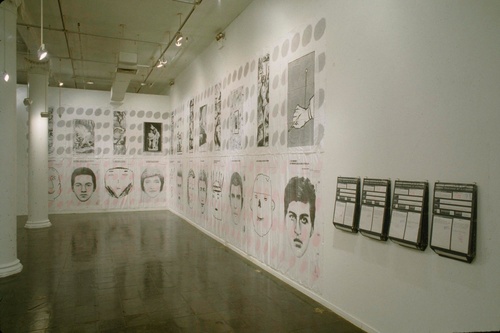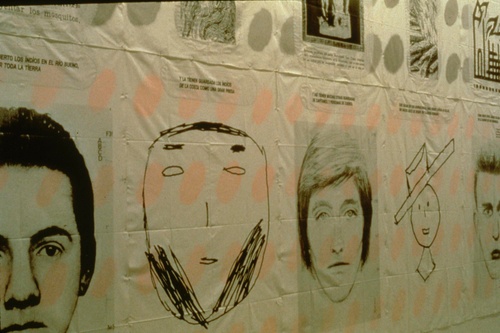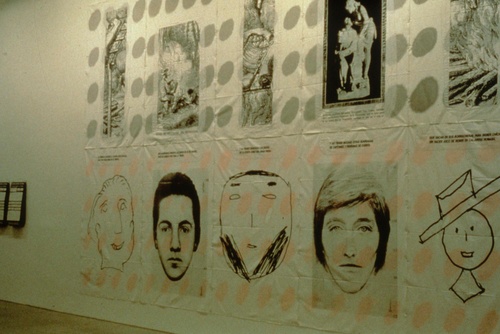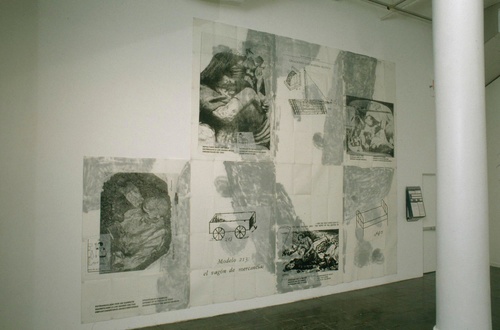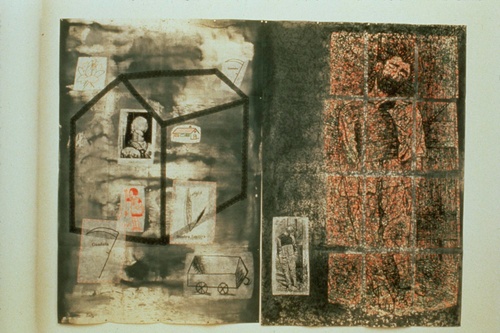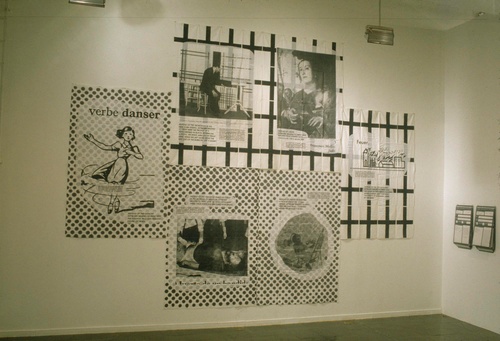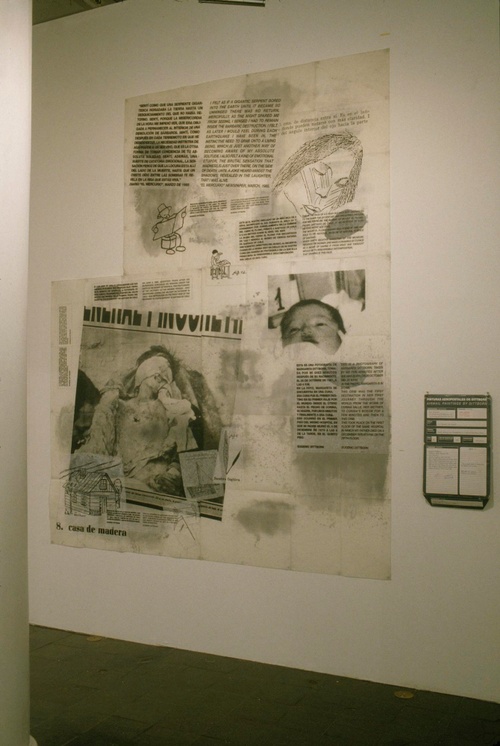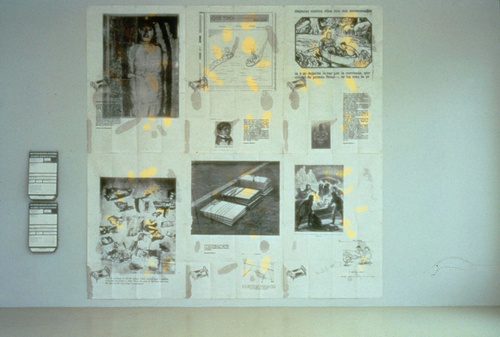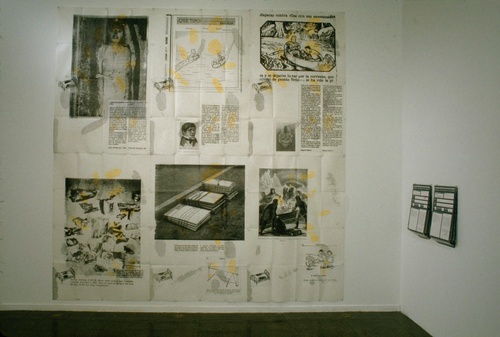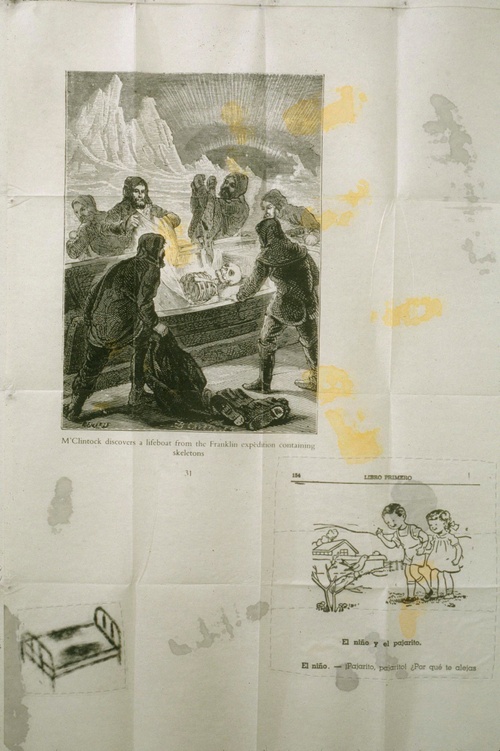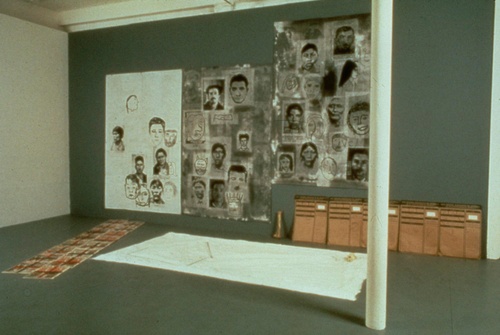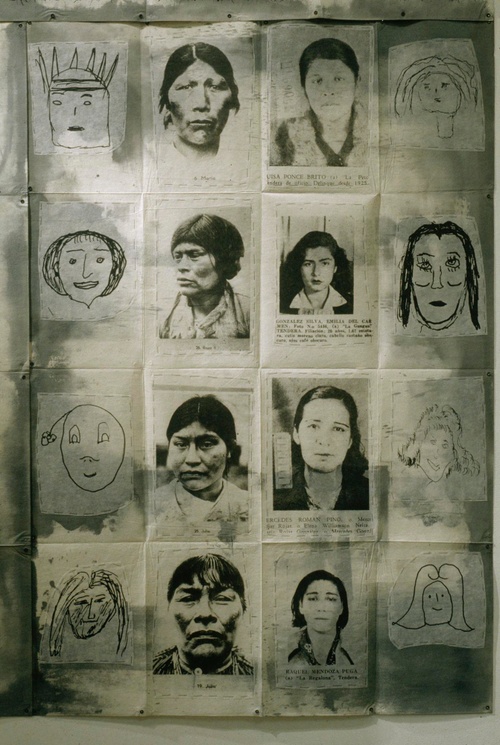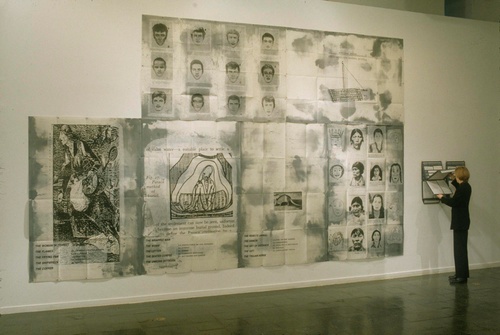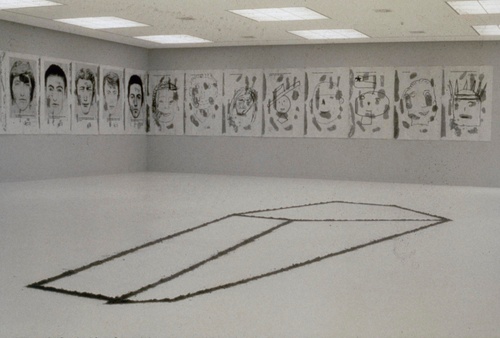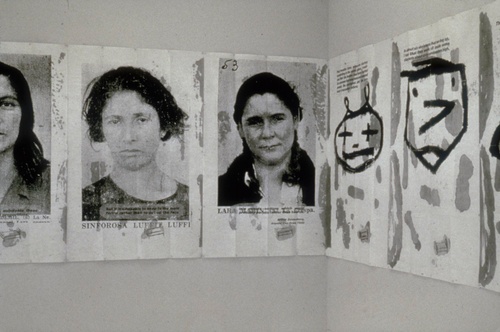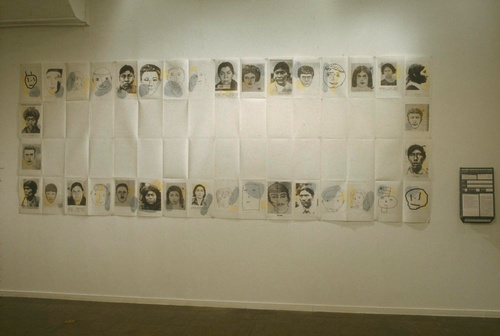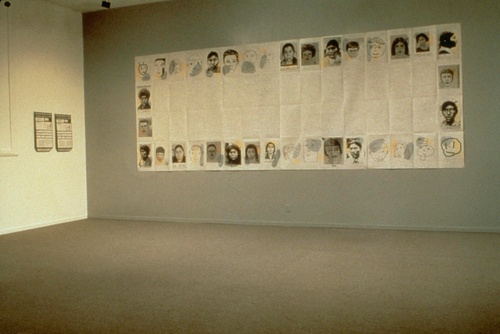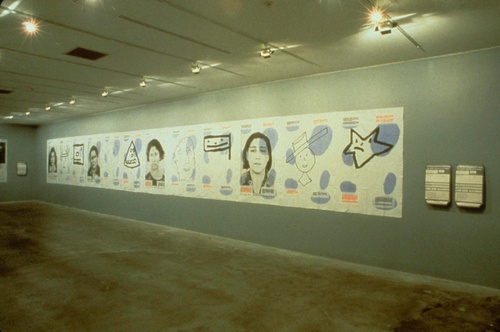Remota: Airmail Paintings by Eugenio Dittborn
Remota: Airmail Paintings by Eugenio Dittborn
This exhibition was the first by a U.S. museum that investigated the unique oeuvre of the highly influential Latin American artist, Eugenio Dittborn. Following an early career as a painter, graphic artist and creator or earthworks, Dittborn began at the height of the Pinochet military dictatorship to produce works that would circumvent both the state censors as well as the cultural boycott imposed on Chile from the outside. Produced from imagery whose range included historical engravings, old police photos, drawings by schizophrenics and current mass media, the airmail paintings, once made, were folded and placed in customized envelopes, which were then exhibited alongside the works.
Scattered, sent from one city to another throughout the world, the Airmail Paintings were constantly on the move starting in 1983. All the paintings shown—including the earliest ones—had been in constant circulation. For example, “Airmail Painting No. 33, Pieta (no Cor),” was produced in 1985 and had been traveling ever since, last arriving in Santiago in May 1996. During its eleven years of journeying, it had passed through Melbourne, Hobart, Adelaide, East Berlin, Cleveland, Chicago and New York.
Because of this, Dittborn’s Airmail Paintings do not easily lend themselves to a retrospective exhibition. The important thing, with any given painting, was not so much the date of its production, as the dates of its multiple journeys. Nor, strictly speaking, did the return of these works to Santiago, as their place of origin on the periphery, mark a homecoming, or their next journey to the metropolis of New York a culmination. Rather, they passed through these cities just as they have previously passed through Havana, Sydney, or Amsterdam, because the primary state of Dittborn’s works was the state of transit.1


